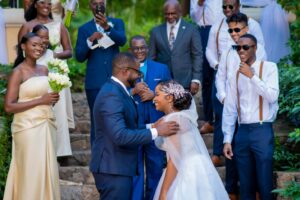Keith Clarke’s organs were split open by 20 bullets says pathologist
KINGSTON, Jamaica — Former chief forensic pathologist in the Legal Medicine Unit at the Ministry of National Security Dr Dinesh Rao said on Wednesday that he received three proposals from the Independent Commission of Investigations (INDECOM) that possibly explained how accountant Keith Clarke was shot dead at his house on May 27, 2010 by members of the Jamaica Defence Force (JDF).
Based on the evidence he assessed, he accepted the third one.
Dr Rao was giving testimony, via video link, in the Home Circuit Court murder trial of three soldiers in downtown Kingston.
The soldiers on trial are Lance Corporals Greg Tingling and Odel Buckley as well as Private Arnold Henry, for the shooting death of Clarke.
Said Dr Rao: “The third proposition was that Mr Clarke was shot while he was coming down from the top of the closet with his back turned towards the shooter. I was asked to opine on the possible position of the shooter. Of the three, proposition number three corroborated with the external and internal injuries at the crime scene regarding the position of the shooter. I am of the opinion that majority of the gunshots entered the left side, back region, indicating the position of the deceased.
“The left side, back of the body was facing the shooters or he turned himself away from the shooters, exposing his left side, back or during the manoeuvres at the moment of shooting so as to expose the left surface of his back towards the shooters. The deceased was either crouching or bending opposite the shooter. Few of the firearm injuries suggest that he could have been shot after or during the process of his fall on the floor,” Dr Rao said.
The first proposition put to the doctor by INDECOM that Clarke was shot while he was lying on top of the closet inside the master bedroom of his house at 18 Kirkland Close in Kirkland Heights, St Andrew, and pointing a gun at the shooters. The second proposition was that the now-deceased accountant was shot after he had fallen to the ground from on top of the closet and was reaching for his licensed firearm.
Dr Rao rubbished both the first and second propositions.
The pathologist said he had received a request from INDECOM on December 8, 2010 to provide his expert opinion.
Dr Rao told the court that there were in total 25 injuries to the body of Clarke which were from gunshots. He said 20 of those injuries were fatal injuries while the other five were non-fatal injuries.
Dr Rao said he took three things from Clarke’s body.
“We took clothes, bullet fragment and a piece of sternum. The sternum is the centre bone in the front of the chest between the ribs. After removing these items, it was handed over to the police. The conclusion I came to was that death was due to traumatic shock as a result of extensive lacerations of lungs, heart, intestines and left kidney due to multiple gunshot wounds to the back involving chest and abdomen. Because of the multiple gunshots, the organs inside the chest cavity and abdomen were destroyed or were extensively damaged or split open because of the bullets and because of shock waves and splinters associated with the bullets,” he said.
Clarke was killed during a police-military operation which was aimed at capturing then fugitive drug lord Christopher “Dudus” Coke, who was allegedly camping out and hiding inside the basement at Clarke’s house with around seven heavily armed henchmen.
It is alleged during the operation, the gunmen challenged the security forces to a fierce gun battle before escaping in a heavily forested area to the back of the premises.
Clarke, who was inside his house along with his wife and teenage daughter, was shot dead as he allegedly attempted to come down from the top of his closet.
The argument put forward by the defence was that Clarke pointed his licensed firearm at the soldiers and possibly shot at them, which prompted them to return gunfire.
The trial continues on Monday.












